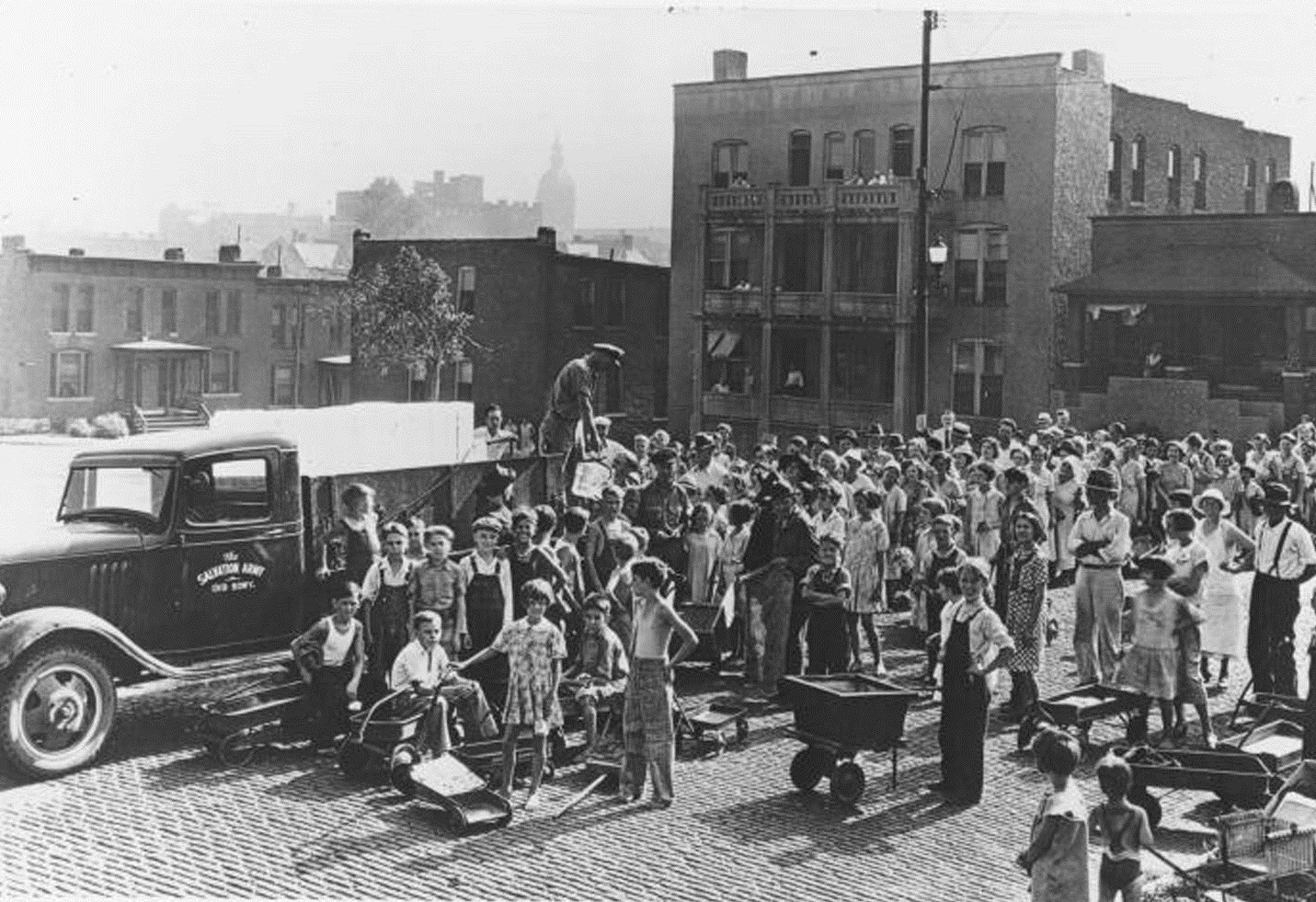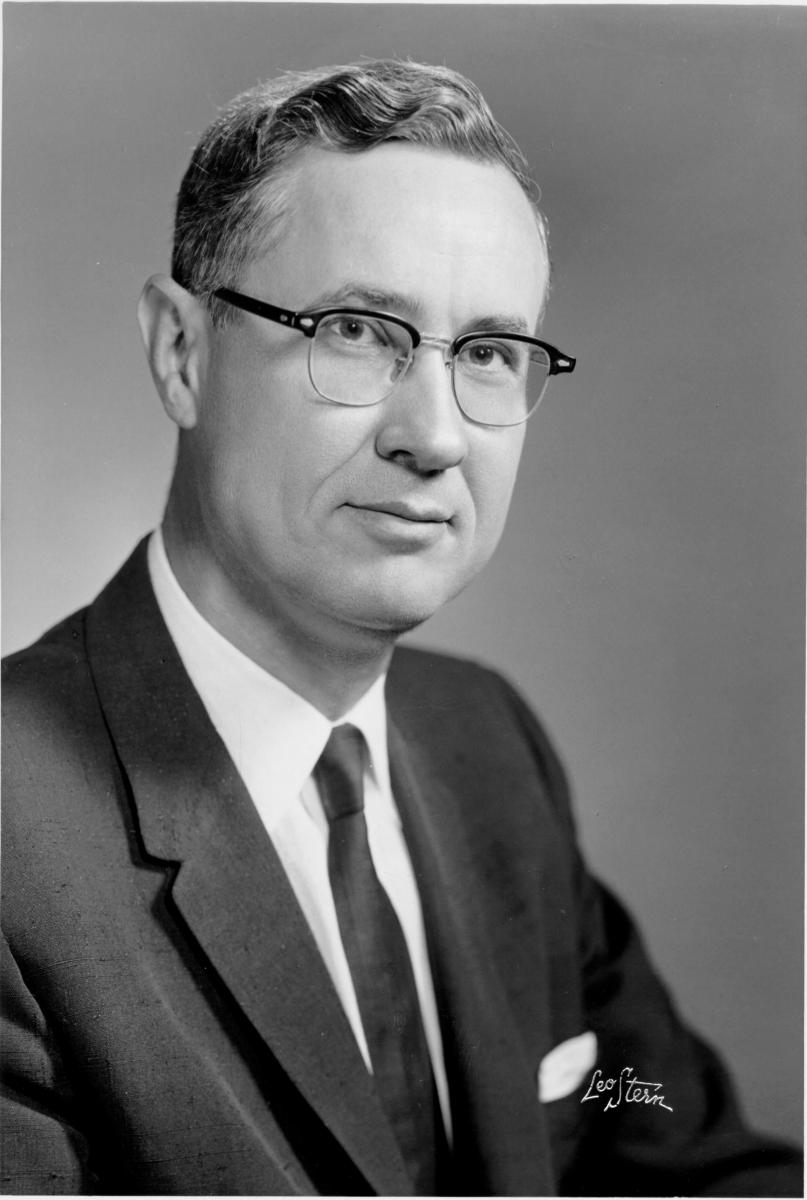Heat Wave of 1936
In the midst of a sweltering summer heat wave, the temperature reached a record-high 113 degrees Fahrenheit in Kansas City on August 14, 1936. These high temperatures in the summer of 1936 remain the most extreme in modern North American history. Compounding the problem, virtually no one had air conditioning in their own homes in the 1930s. The consequence was a nationwide death toll of between 4,500 and 5,000 lives lost, making it among the worst natural disasters in U.S. history. Kansas City merely coped as best as it could.
Refuge from the heat was decidedly hard to come by. Many area residents spent several nights in the cooler areas of Swope Park, the mall of Liberty Memorial, and Penn Valley Park. A popular option in the afternoon and evening was to attend the movies, where many of the theaters were air conditioned. The price was about 10 cents for a matinee and 40 cents for an evening show. Other businesses offered cool sanctuaries, such as the special air conditioned rooms at the Wolferman's grocery stores, to paying customers. The city's poorer residents had difficulty affording the ice produced at local factories, which prompted the Salvation Army to raise money for "Penny Ice" to be sold for a penny per pound to the needy. The doctors' advice, as reported in the local newspapers, was that, "[the] cardinal rule on combating the heat is to forget it, remain detached."

Former Mayor Ilus Davis recalled in 1986 that the heat 50 years before was, "sort of unreal... you just sat around and talked about the heat." Davis also recounted using wet rags to cool his car's steering wheel in the afternoon and even his bed at night. Sharing his concern were hundreds of people who frequently called the local weather bureau to inquire about the official temperature. On the hottest day of the heat wave, August 14, they called at a rate of 300 times each hour and overwhelmed the workers who had to answer the phones. At 2 p.m., a fire broke out one half-mile from Swope Park. It was undoubtedly the result of the extended drought and heat, but fortunately firefighters were able to contain it.

The hottest day in Kansas City history played one last cruel trick just after 4 p.m., when a thunderstorm brewed in the sky, bringing the hope of a cooling rain. Instead, the clouds produced lightening, a trace amount of rainfall, and a modest drop in temperature to a still-toasty 96 degrees. On the following day, temperatures returned to an excess of 100 degrees. The local heat wave was only half over. In all, there were 16 straight days of 100 degree temperatures that August and a total of 53 non-consecutive 100 degree days that summer.
While the high temperatures were the most prolonged in 1936, it was not the only notable heat wave in Kansas City's history. During a heat wave and drought in 1934, much of the livestock at the stockyards had to be shot because 1,500 workers went on strike and the animals lacked water. On July 14, 1954, in the middle of another protracted heat wave, temperatures hovered at 98 degrees even after 10:30 p.m. By then, air conditioning was starting to become popular in private homes, for those who could afford it. The number of portable air conditioning units in the city doubled to 30,000 that summer. Other residents sought refuge in the parks, as they had in the past.
The city's most severe heat wave since 1936 occurred in 1980. Roughly 40 percent of residents still did not have air conditioning, and the Kansas City metropolitan area suffered a shocking 176 heat-related deaths. Unlike 1934, 1936, and 1954, many locals feared spending the night in the parks because of the potential for crime. The tragedy became clear at the peak of the heat wave, when rescue crews discovered bodies at the rate of one per hour. Many area hospitals, morgues, and mortuaries were literally overwhelmed with victims. In the 44 years since Kansas City's highest single-day temperature, human ingenuity still could not mitigate the effects of a severe heat wave. It is a lesson that the city has had to learn repeatedly, even though temperatures have never again reached the 113 degree mark set on August 14, 1936.
This article has been adapted from an article published at KChistory.org.
This work is licensed under a Creative Commons Attribution-NonCommercial-NoDerivatives 4.0 International License.
